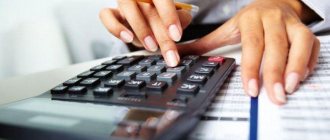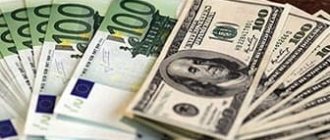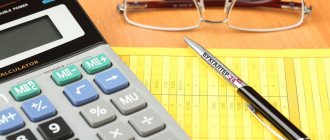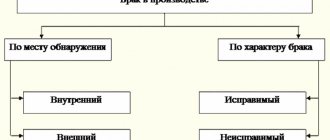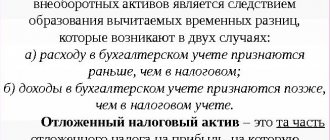Account 91 in accounting
A complete list of other income and expenses can be studied in the order of the Ministry of Finance of the Russian Federation dated October 31, 2000 No. 94n.
The “Other income and expenses” account is active-passive. The credit of the account reflects the receipt, and the debit records the expense:
The main subaccounts for 91 accounts are presented in the figure:
The purpose of analytical accounting for 91 accounts is to provide the ability to determine the financial result based on each type of income and expense. Consequently, when classifying income and expenses, it is necessary to take into account the homogeneous type of costs to ensure the possibility of determining the financial result for each operation of the same type.
For example, amounts under the article “Fines and penalties for contractual obligations” can be attributed to both expenses and income, therefore, the financial result under this article can be analyzed. Or, by analyzing the expense item for paying for the services of credit institutions, the enterprise will be able to see the effectiveness of working with the bank, whether the bank’s “products” are beneficial to the enterprise.
Closing
The methodology that should be used for closing is necessarily indicated in the accounting policy documents of the enterprise. If necessary, a distribution base is prescribed.
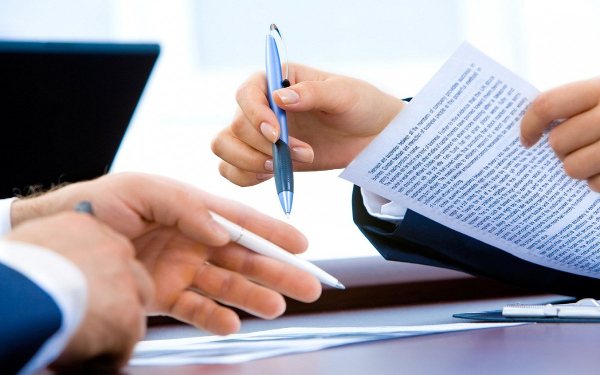
Methods:
- Straight.
- Intermediate.
- Direct sale of goods.
Before proceeding with the procedure for closing account 20, it is necessary to identify and record the balances of the refinery.
Straight
It is characterized by the fact that during the reporting period the cost of products is not known and its accounting is carried out at conventionally designated prices (planned cost). To close, the cost of manufactured goods is adjusted to the actual cost.
Wiring:
- Debit 43 Credit 20 – correction of manufactured products.
- Debit 90.02 Credit 43 - the amount of deviations from the planned cost and write-off to sales costs.
It is worth noting that when using this method it will be impossible to take into account the actual price during the reporting month.
Intermediate
Count 40 is involved here - about production. It shows the difference between the actual and planned cost of expenses. For credit, the planned one is described, and for debit, the real one.
At the end of the month, upon closing, the difference amount must be written off to account 43 (finished products) and 90.02 (cost of sales).
Posting at the beginning of the month:
- Dt 43 Kt 20 – finished products with a planned price were used.
- Dt 90.02 Kt 43 – write-off of goods sold at the planned cost.
End of period:
- Dt 40 Kt 20 – write-off of the actual cost.
- Dt 43 Kt 40.
- Dt 90.02 Kt 40 – correction of the planned price to the actual cost.
Direct sales of manufactured products
With this method, all produced goods are sold directly from the enterprise and are not stored. Manufacturing costs are taken into account immediately.
Closing of the account (sale of services) is carried out at the end of the month (reporting): Dt 90.02 Kt 20 (writing off the real cost of sales).
What to do if account 20 is not closed? Details are in the video.
Regulatory framework
The name of account 91 - Other income and expenses - indicates that data on the organization's receipts and disposals, which are generally considered to be other, is entered into it. To correctly determine what income and expenses can be included here, the accountant must use the following regulatory documents:
- PBU 9/99 “Income of the organization”;
- PBU 10/99 “Expenses of the organization”;
- Order of the Ministry of Finance of the Russian Federation “On approval of the chart of accounts for accounting of financial and economic activities of organizations and instructions for its application” dated October 31, 2000 No. 94n.
In paragraph 4 par. I PBU 9/99 states that other income can be defined as income received from activities other than usual. Paragraph III provides a list of income that may be called other income. This is not a final list, therefore the enterprise has the right to independently determine which income is considered other, based on the provisions of PBU 9/99 and based on the nature of the company’s activities.
The situation is similar with the recognition of other expenses. That is, other expenses are derived from activities that are not normal for the firm. Steam. III PBU 10/99 contains an open list of expenses that should be classified as other. So the company can determine the type of expense itself, taking into account the provisions of the regulatory framework.
Regulatory framework and document flow
Recording and accounting of account 20 is regulated in accordance with certain regulations. The display of this information is regulated by Order No. 94n dated October 31, 2000, issued by the Ministry of Finance - “On approval of the Chart of Accounts”, as well as Order No. 654 dated June 13, 2001, issued by the Ministry of Agriculture - “On approval of the Chart of Accounts”.
Primary type documents:
- Expenses of material type: invoice-request form M-11, when writing off inventory and materials - a summary statement.
- Payment of wages to employees: payroll sheet, orders or orders, accumulative sheet.
- Expenses to cover social needs: declaration used for reporting under the unified social tax, accumulative statement.
- Depreciation is a reporting normative act on depreciation.
- Other costs: invoices from counterparties, issued on a business trip as identification, fiscal documents.
What is it used for?
All transactions that generate income or expenses that are not related to the main activity of the company are reflected in the accounting department in subaccounts 91. The Accounting Regulations (PBU) 9/99 oblige two types of income and expenses to be attributed to them:
- operational, are directly related to the economic activities of the enterprise, but are not the goal;
- non-operating, formed due to the consequences of the economic activities of the organization.
Additional Information! They are shown separately in the financial statements.

Expenses
Postings to 91 accounts “Other income and expenses”
Correspondence and main transactions for 91 accounts are shown in the table:
| Dt | CT | Wiring Description | A document base |
| 91 | 01 | Write-off of retired fixed assets at residual/initial value. | OS-1, SP-51 |
| 91 | 02 | Calculation of depreciation on fixed assets that are leased (not an object of activity). | Accounting statement, Depreciation sheet |
| 91 | 03/04 | Write-off of retired income-generating investments in tangible assets (hereinafter referred to as MT)/intangible assets. | Accounting certificate, Acceptance certificate |
| 91 | 07 | Write-off of equipment for installation (sold/transferred free of charge) at cost. | Acceptance certificate, Invoice |
| 91 | 08 | Write-off of the cost of investments in VNA. | Certificate of acceptance and transfer, Certificate of gratuitous transfer of valuables |
| 91 | 10 | Write-off of materials sold/transferred free of charge (upon disposal of fixed assets) at actual cost. | Acceptance certificate, Invoice |
| 91 | 11 | Write-off of the cost of sold animals (not an activity item). | TTN (SP-32) |
| 91 | 14/59/63 | Creation of a reserve to reduce the value of the investment capital/ensure investments in securities/for doubtful debts. Write-off of amounts to reserves – by reverse posting. | Accounting certificate, accounting calculation for creating a reserve |
| 91 | 15 | Reflection of write-off of materials (actual cost). | Acceptance certificate, Invoice |
| 91 | 16 | Write-off of the share of deviations from the accounting cost of materials sold (if a negative value - a red reversal). | Accounting certificate, accounting calculation for writing off deviations |
| 91 | 19 | Write-off of VAT on materials sold (non-refundable). | Accounting information |
| 91 | 20/21/23 Get 267 video lessons on 1C for free:
/29 | Write-off of expenses for maintaining production facilities/facilities for conservation. | Accounting certificate, accounting calculations |
| 91 | 23 | Write-off of the cost of services of auxiliary production (upon disposal of fixed assets). | |
| 91 | 28 | Write-off of the cost of irreparable defects (work of an operational nature). | |
| 91 | 43 | Write-off of commercial expenses (for the sale of operating systems, materials). | |
| 91/ 19 | 60 | Reflection of amounts accrued by the contractor for work/services performed upon liquidation/sale of fixed assets, other assets/VAT amount. | Invoice |
| 91 | 60/62/76 | The amount of receivables/debt is written off after the expiration of the statute of limitations/ cannot be recovered in any way. | INV-17, Accounting certificate, Minutes/order of the manager |
| 91 | 66/67 | Reflection of the percentage amount payable for using credits/loans. | Accounting certificate, Bank account statement |
| 91 | 68 | VAT accrual (income from the sale of operating systems/materials). | Accounting certificate, VAT accounting calculation |
| 91 | 70/69/10 | Reflection of expenses for liquidation of OS-v. | Work order for piece work, Certificate of write-off of valuables |
| 91 | 75 | Reflection of expenses (simple partnership agreement). | Accounting certificate-calculation |
| 91 | 51/76 | Reflection of violations of the terms of business contracts (paid/recognized for payment). | Bank account statement, Invoice, Accounting certificate |
| 91.02 91.01 | 52/60/62 /58/… + 55/67 | Reflection of exchange rate differences (negative). Positive - reverse wiring. | Act on revaluation of values, Accounting certificate |
| 91 | 73 | Write-off of the cost of material damage (it is unrealistic to recover, for example, a court refusal). | INV-17, Leader's order Accounting information |
| 91 | 76 | Payment for services of credit institutions/costs of consideration of cases in courts. Profit receivable under a simple partnership agreement / interest on loans, income on shares, shares and securities / fines, penalties and interest for violation of the terms of agreements - reverse posting. | Accounting certificate, Notice/Bank statement, Invoice, KO-1 |
| 91 | 79 | Reflection of expenses on transactions with structural divisions (on a separate balance sheet). Reflection of income - reverse posting. | Invoice, Advice |
| 91 | 81 | The difference between actual costs (repurchase of shares/shares) and par value (participant's own shares/shares). When repurchasing, the difference is reflected by reverse posting. | Accounting statement, calculation of the difference between the actual costs of repurchasing shares and their nominal value |
| 91 | 94 | Write-off of the cost of shortage of valuables in excess of the norm / from damage (in the absence of specific culprits). | INV-3, Manager's order, Accounting certificate |
| 91 | 98 | Write-off of other income amounts (future periods). Enrollment – reverse posting. | Accounting information |
| 99.02/ 99.03 | 91 | Write-off of the balance of income/expenses at the end of the month. | Calculation of the balance of other income and expenses, Accounting certificate |
| 96 | 91 | Crediting to income the amount of unused reserve for upcoming expenses/payments. | Accounting information |
| 60/76 | 91 | Crediting of accounts payable/receivable (unclaimed after the expiration of the limitation period). | INV-17 |
| 10/62 | 91 | The amounts of transactions with containers are reflected. | Waybill, Invoice |
| 07/10/11 /41/43/45 08 /20/21/29 /23 | 91 | The surplus/unaccounted amounts of inventory items identified during the inventory are reflected. | INV-3, INV-19, INV-24 |
Postings to the account “03/19”
By debit
| Debit | Credit | Content | Document |
| 19.03 | 000 | Entering initial balances: VAT on purchased inventories | Entering balances |
| 19.03 | 60.01 | Reflection of the amount of VAT on purchased inventories (except containers), goods under the contract in rubles. | Receipts (acts, invoices) |
| 19.03 | 60.21 | Reflection of the amount of VAT on purchased inventories (except containers), goods under the contract in foreign currency | Receipts (acts, invoices) |
| 19.03 | 60.31 | Reflection of the amount of VAT on purchased inventories (except containers), goods under the contract in cu. | Receipts (acts, invoices) |
| 19.03 | 68.02 | Reinstatement of VAT on purchased inventories sold for export at a 0% rate | VAT recovery |
| 19.03 | 68.02 | Reinstatement of VAT when adjusting the cost of receipt downward | Adjustment of receipts |
| 19.03 | 76.NA | VAT accrued when performing the duties of a tax agent | Receipts (acts, invoices) |
By loan
| Debit | Credit | Content | Document |
| 10.01 | 19.03 | Inclusion in the cost of raw materials and supplies of the amount of non-refundable VAT paid upon purchase | VAT write-off |
| 10.02 | 19.03 | Inclusion in the price of semi-finished products, components, structures and parts of the amount of non-refundable VAT paid upon purchase | VAT write-off |
| 10.03 | 19.03 | Inclusion in the price of fuel of the amount of non-refundable VAT paid upon purchase | VAT write-off |
| 10.04 | 19.03 | Inclusion in the cost of packaging and packaging materials of the amount of non-refundable VAT paid upon purchase from organizations engaged in production activities or provision of services | VAT write-off |
| 10.05 | 19.03 | Inclusion in the cost of spare parts of the amount of non-refundable VAT paid upon purchase | VAT write-off |
| 10.06 | 19.03 | Inclusion in the cost of other materials of the amount of non-refundable VAT paid upon purchase | VAT write-off |
| 10.08 | 19.03 | Inclusion in the cost of building materials of the amount of non-refundable VAT paid upon purchase | VAT write-off |
| 10.09 | 19.03 | Inclusion in the cost of inventory and household supplies of the amount of non-refundable VAT paid upon purchase | VAT write-off |
| 10.10 | 19.03 | Inclusion in the price of special equipment and special clothing of the amount of non-refundable VAT paid upon purchase | VAT write-off |
| 19.07 | 19.03 | Attribution of VAT on purchased goods to export sales at a rate of 0% | Sales (acts, invoices) |
| 19.07 | 19.03 | Attribution of VAT on purchased materials to export sales at a rate of 0% | VAT distribution |
| 20.01 | 19.03 | Write-off of the amount of non-refundable VAT on material resources used in the main production, exempt from VAT | VAT write-off |
| 23 | 19.03 | Write-off of the amount of non-refundable VAT on material resources used in auxiliary production, exempt from VAT | VAT write-off |
| 25 | 19.03 | Write-off of the amount of non-refundable VAT on material resources written off as general production costs, subject to VAT exemption | VAT write-off |
| 26 | 19.03 | Write-off of the amount of non-refundable VAT on material resources written off as general business expenses, subject to VAT exemption | VAT write-off |
| 44.01 | 19.03 | Write-off of the amount of non-refundable VAT on material resources written off as distribution costs in organizations engaged in trading activities | VAT write-off |
| 44.01 | 19.03 | Write-off of VAT on work performed and services provided for distribution costs in organizations engaged in trading activities | VAT distribution |
| 44.02 | 19.03 | Inclusion in business expenses of the amount of VAT on work performed and services provided in organizations engaged in industrial and other production activities | VAT distribution |
| 44.02 | 19.03 | Write-off of the amount of non-refundable VAT on material resources written off as business expenses in organizations engaged in industrial and other production activities | VAT write-off |
| 68.02 | 19.03 | Acceptance of VAT deduction for downward adjustment of sales | Generating purchase ledger entries |
| 68.02 | 19.03 | Manually reflecting VAT deduction on material resources | Reflection of VAT for deduction |
| 68.02 | 19.03 | VAT deduction on inventories | Generating purchase ledger entries |
| 68.02 | 19.03 | Acceptance for deduction of VAT upon adjustment of receipts upward | Generating purchase ledger entries |
| 91.02 | 19.03 | Write-off of VAT on purchased material assets if, in accordance with current legislation, VAT amounts are not refundable | VAT write-off |
| 91.02 | 19.03 | Write-off of the amount of VAT on material assets paid (payable) but not reimbursed in accordance with current legislation, in connection with the implementation of operating or non-operating activities | VAT write-off |
| 91.02 | 19.03 | Write-off of VAT on acquired material assets lost due to natural disasters or emergency circumstances | VAT write-off |
| 91.02 | 19.03 | Write-off of VAT on work performed and services provided for other expenses not related to core activities | VAT distribution |
| 94 | 19.03 | Write-off of VAT on acquired material assets lost due to theft or damage | VAT write-off |
Typical accounting entries 91
Let's consider the main accounting entries for reflecting business transactions with other income and expenses:
| Content | Debit | Credit |
| Receipt of PD to settlement accounts or to the company’s cash desk | 51 50 | 91-1 |
| PD for settlements with customers is reflected | 62 | 91-1 |
| PD for settlements with various debtors and creditors was taken into account | 76 | 91-1 |
| Value added tax is charged for other transactions | 91-3 | 68 |
| Reflected PR upon disposal of fixed assets | 91-2 | 01 |
| DP taken into account when disposing of inventories or raw materials | 91-2 | 10 |
| Accepted for accounting of PR for settlements with suppliers and contractors | 91-2 | 62 |
| Disposals from the company's settlement accounts for PR operations are reflected | 91-2 | 51 |
Note that accounting account 91 at the end of the reporting month should not have any balances, that is, this accounting account should be closed.
General description of account 19 “VAT on purchased assets”
What is the account used for? 19? It is intended to collect on it amounts of value added tax that are presented to organizations that pay value added tax by sellers of goods, works, and services. Typically, such amounts are reflected on the basis of invoices from sellers. Those who are not VAT payers or carry out non-taxable transactions include all “input” VAT in the cost of purchased goods, works, and services.
Postings for capitalization of VAT (19th account):
Dt 19 Kt 60, 76 - for the amount reflected in invoices from sellers.
The account is active: the debit reflects the amounts of value added tax on goods (work, services) accepted for accounting, while the credit reflects those declared for deduction from the budget or to be included in the cost of purchased goods (work, services). In the account balance 19 is reflected in section II. CURRENT ASSETS in line 1220. This balance shows the amount that can be claimed for reimbursement from the budget in later periods.
The recommended subaccounts for account 19 are listed in Instruction 94n, according to which analytical accounting should be organized by the names of the assets being acquired.
Typical transactions for account 91:
- D account 91 02 K 66, 67 – the accrual of credit percentage is reflected.
- D 91.02 K 10 – reflects the write-off of inventory items upon disposal.
- D 91.09 K 99 – the closing of the account balance is reflected.
- D 91.02 K 70 – reflects the accrual of semi-annual bonuses to staff.
- D 10 (41, 01) K 91.01 - surplus inventory, goods, fixed assets were identified.
- D 76 K 91.01 – reflects the accrual of interest on bonds.
- D 91.02 K 76 – reflects the accrual of the commission for the bank’s cash settlement services.
- D 51 K 91.01 – reflects the receipt of penalties for non-compliance with contractual terms.
Correspondence of account 91 with other accounting accounts
Almost any activity of the organization can become a source of other income and expenses, therefore the number of corresponding accounts is almost equal to the number of accounts in the plan. We have collected all the numbers in a table.
| Only by debit | Only on loan |
| 01 02 03 04 07 08 10 11 14 15 16 19 20 21 23 28 29 58 59 60 63 66 67 68 69 70 71 73 76 79 81 94 98 99 | 07 08 10 11 14 15 20 21 23 28 29 41 43 45 50 51 52 55 57 58 59 60 63 66 67 62 71 73 75 76 79 81 96 98 99 |
VAT accounting for the buyer of teapots at the retail store "ACTIV" LLC:
- Debit 41 Credit 60,100,000 rubles. -Kettle goods received in the amount of 100,000 rubles. VAT is not included in the price, since the VAT must be returned to us by the budget. On the debit account 41 - on the debit of this account there is an increase in goods, on the credit account 60 - on the credit of this account the occurrence of accounts payable is reflected, i.e. we owe the supplier 100,000 rubles for teapots.
- Debit 19 credit 60 18,000 rubles. -VAT has been allocated on the delivery of goods and we immediately post it so that there is no balance on the 19th VAT account. We reason like this: the debit reflected VAT on the purchase, and the credit 60, i.e. an increase in accounts payable, i.e. we must pay VAT to the supplier.
- Debit 68/VAT credit 19 in the amount of 18,000 rubles. VAT in the amount of 18,000 rubles is accepted for deduction. We write off the purchase VAT to account 68/VAT in debit - debit, since accounts receivable - the budget owes us the VAT that we paid to the supplier.
- Debit 51 credit 68/VAT in the amount of 18,000 rubles. The budget returned 18,000 rubles to our bank account. On debit 51 there is an increase in money. On credit - repayment of receivables, i.e. reduction of budget debt to us. VAT from the 3rd entry is reimbursed to us by the budget. In practice, actual VAT refund to the current account is possible only upon a written application from the organization to the tax authority with the provision of a certain package of documents and after a tax audit. In fact, by the amount of VAT that the budget must return to us, we can reduce the amount of VAT that we ourselves must pay on the sale of purchased goods.
Examples of transactions and postings for 91 accounts
Example 1. Accounting for other rental income on account 91.01
Let's say Leto LLC, with its main activity in the production of confectionery products, receives income from renting out premises in one of the industrial buildings. The tenant of “Vasilek” pays 50,000 rubles monthly, according to the concluded agreement. Payment for rent was credited to the account in the amount of 50,000 rubles.
The amount of monthly expenses incurred by Leto LLC for maintaining the premises consists of:
- depreciation charges - 2,000 rubles;
- wages for service personnel - 8,000 rubles;
- wage taxes - 1,500 rubles;
- utilities and other services - 3,000 rubles.
Based on the results of November 2021, the following entries were made in the accounting department of Leto LLC:
| Dt | CT | Wiring Description | Amount, rub. | A document base |
| 76 | 91.01 | The amount of rent for November 2021 has been accrued | 50 000 | Certificate of completion |
| 91.02 | 02/70/69/23 | The costs of maintaining the rented premises were written off (2,000 + 8,000 + 1,500 + 3,000) | 14 500 | Receipts, invoices, acts, etc. |
| 51 | 76 | Payment for rental services has been credited to the personal account received from the tenant “Vasilek” | 50 000 | Bank statement |
Example 2. Accounting for other income from the sale of materials on account 91.01
Let’s assume that Leto LLC sold other materials not used in the production of confectionery products. Wherein:
- sales cost - 40,000 rubles;
- cost of materials - 15,000 rubles;
- salary and taxes on wages of production workers - 4,000 rubles.
Accounting for other income from materials sold was reflected in the accounting of Leto LLC with the following entries to account 91:
| Dt | CT | Wiring Description | Amount, rub. | A document base |
| 76 | 91.01 | Accrued income from the sale of materials | 40 000 | Sales Invoice |
| 91.02 | 10 | The cost of materials has been written off | 15 000 | Costing |
| 91.02 | 23 | Costs associated with sales (salaries and taxes) are written off | 4 000 | Payroll |
| 51 | 76 | Funds received for materials sold | 40 000 | Bank statement |
Example 3. Accounting for banking services on account 91.02
Let’s say Leto LLC has entered into an agreement with a bank for the provision of services. At the end of the month (reporting period), the bank provided the following services:
- for installing the Bank-Client system for a period of 3 years (one-time service) - 7,000 rubles;
- for “Bank-Client” service (monthly service) - 400 rubles;
- for settlement and cash services (RKO) - 2,000 rubles;
- for cash collection - 6,000 rubles.
In the accounting of Leto LLC, entries were made to reflect banking services:
| Dt | CT | Wiring Description | Amount, rub. | A document base |
| 91.02 | 60 | RKO services are reflected | 2 000 | Agreement for servicing a bank account, bank statements |
| 91.02 | 60 | Cash collection expenses | 6 000 | Certificate of services rendered |
| 91.02 | 60 | Costs for installing “Bank-Client” | 7 000 | Certificate of services rendered |
| 91.02 | 60 | Expenses for servicing “Bank-Client” per month | 400 | Certificate of services rendered |
Correspondence and postings
For credit with debit:
- wear – 02;
- NMA – 04;
- wear and tear of intangible material – 05;
- raw materials for the manufacture of goods -;
- animals at the stage of growing or fattening – 11;
- the difference between the planned cost of materials and the actual one – 16;
- VAT on funds spent on the purchase of goods, services or works – 18;
- main production (OS) – 20;
- semi-finished products manufactured at the enterprise – 21;
- auxiliary production – 23;
- expenses for general needs of manufactured products – 25;
- marriage – 28;
- finished goods – 43;
- payment of invoices to suppliers and contractors - ;
- tax bills and fees – ;
- social insurance costs and contributions for its provision – ;
- salary - ;
- write-off of funds for settlements with accountable persons -;
- payments to the founders of the enterprise - 75;
- covering accounts payable and settlements with debtors – 76;
- write-off of on-farm expenses – 79;
- financing of targeted expenses – 86;
- income level and write-off of funds for the current state -;
- other income and expenses –;
- shortages and losses associated with breakdown or damage to property –;
- payments in reserve – 96;
- expenses planned for the future period – 97.
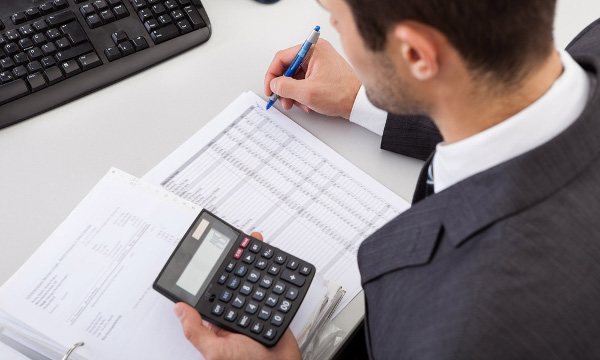
By debit with credit:
- accounts 10, 11, 16, 20, 21, 28, 43, , 79, 86, 90, 91, 94, 96 – with the same semantic values are displayed on the debit position;
- 15 – purchase or production of materials;
- 75 – products that have been shipped.
For debit, accounting is done using postings (the first account is Dt, the second is Kt):
- 20 02 – accrued cost of depreciation of the operating system;
- 20 04 – launch of production using new technologies;
- 20 05 – accounting for wear and tear of intangible assets;
- 20 10 – write-off and display of the cost of purchasing materials, workwear, necessary tools and equipment necessary for the manufacturing process;
- 20 16 – deviations in the cost of written-off materials;
- 20 19 – information about non-refundable VAT that was charged on services or work;
- 20 21 – valuation of semi-finished products involved in the process of production of goods;
- 20 23 – information about the funds used for the VP;
- 20 25 – accounting for expenses for general production;
- 20 26 – fixation of expenses for general business needs;
- 20 28 – cost of defects included in the manufacture of goods;
- 20 40 or 43 – goods sent for processing or finished goods that were written off for production needs;
- 20 41 – price of goods written off for manufacturing needs;
- 20 60 – services provided by contractors included in the cost of production (PP) of products;
- 20 68 – taxes and fees in this area;
- 20 69 – contributions for insurance of workers involved in the process;
- 20 70 – wages;
- 20 71 – covering the amounts used for production and calculated in the reports;
- 20 73 – compensation payments to cover the costs of the employee involved in the manufacture of goods;
- 20 75 – expenses for OP, which are included in the authorized capital;
- 20 76.2 – downtime and claims made to contractors for failure to fulfill the terms of the contract;
- 20 79 – expenses recorded on the balance sheet of divisions that participate in production;
- 20 80 – production of products that are in an unfinished stage, but included in the capital of the authorized type;
- 20 86 – work in progress, which was used to finance the intended purpose;
- 20 91.1 – use of surplus unfinished production of products;
- 20 94 – damages and losses, without identifying the guilty workers within the established standards;
- 20 96 – valuation of reserves accounted for in the PP;
- 20 97 – covering planned production costs.
By loan:
- 10 20 – goods that were returned or their own valuables were written off;
- 15 20 – accounting of work performed or services provided by the EP;
- 21 20 – used semi-finished products;
- 28 20 – costs that were required to eliminate the defect;
- 40 (43) 20 – write-off of manufactured products or display of their cost;
- 45 20 – transfer of goods, performance of work and provision of services to contractors;
- 76.01 20 – insurance compensation;
- 76.02 20 – reduction in the level of expenses for claims presented to counterparties and downtime;
- 79 20 – the needs of targeted financing for production are taken into account;
- 90.02 20 – write-off of the cost of services provided;
- 91.02 20 - write-off of funds that occurred due to the disposal of certain assets or expenses due to emergencies in the unfinished production of goods that were included in other losses;
- 94 20 – the amount of shortage in this category of the company’s activities;
- 99 20 – losses included in the section of uncompensated costs that arose due to an emergency.
Examples of transactions on accounts. 91:
- Example 1. “Account 91 1 to reflect the receipt of rental income” - the company provides premises for rent. The monthly receipt of money for rent is reflected using entry D 62 K 91.01 for the amount of the rent.
- Example 2. “Account 91 2 to reflect the write-off of commissions for banking services” - such operations can be carried out directly through the account. 91 by posting D 91.02 K 51 or through account 76 indicating the bank - D 76 K 51 for the amount of cash settlement, and then D 91.02 K 76.
- Example 3. “Account 91 1 to reflect income from the sale of MC” - the sale of materials is recognized as other income, therefore all operations are carried out through 91 accounts. The entries are as follows: D 62 K 91.01 – the sales amount is reflected, D 91.02 K 10 – the write-off of the cost of the MC is reflected, D 91.VAT K 68.VAT – the tax is allocated.
Description of the account “VAT on purchased inventories”
Subaccount 19.03 “VAT on purchased inventories” shows how much value added tax was included along with purchased raw materials, supplies, consumables and other valuables that are extremely necessary for the production itself.
The amount of VAT paid to suppliers or contractors is collected in this account for further reflection in the tax return and reducing the amount of tax paid for the reporting period for the purchasing company.
Standard operations with 91 accounts
Transactions on 91 accounts are related to income and expenses. Receipts are reflected in the credit of the account. Let's look at typical operations:
| Wiring | The essence of the operation |
| Dt 41 Kt 91-1 | During the inventory, unaccounted for goods were found. |
| Dt 63 Kt 91-1 | The balance of the reserve for doubtful debts was written off. |
| Dt 51 Kt 91-1 | Rent was received for the fixed asset provided for temporary use. |
| Dt 51 Kt 91-1 | Interest received on the loan issued. |
| Dt 60 Kt 91-1 | The amount of the creditor for which the statute of limitations has expired is reflected. |
| Dt 62 Kt 91-1 | Income was received from the sale of a fixed asset. |
| Dt 98 Kt 91-1 | The assets were received free of charge. |
| Dt 99 Kt 91 | Write-off of balance. |
Accounting entries related to other expenses:
| Wiring | The essence of the operation |
| Dt 91-2 Kt 01 | The residual value of the retired fixed asset is written off. |
| Dt 91-2 Kt 02 | Depreciation has been calculated on leased fixed assets. |
| Dt 91-2 Kt 10 | The actual cost of materials donated to another company was written off. |
| Dt 91-2 Kt 14 | A reserve has been created to reduce the cost of the MC. |
| Dt 91-2 Kt 60 | Write-off of receivables that are unrealistic for collection. |
| Dt 91-2 Kt 66 | Interest paid on the loan. |
| Dt 91-2 Kt 51 | A penalty under the contract was recognized as payable. |
| Dt 91-2 Kt 94 | A shortage in excess of the norm is reflected, there are no culprits. |
Kontur.Accounting will help you maintain your accounting records. The service determines income and expenses in accordance with the Tax Code of the Russian Federation and takes into account when to recognize them. Keep records, pay salaries and submit reports via the Internet. Anyone who registers with Accounting for the first time receives a 14-day trial period.
Accounting for VAT at the seller of teapot goods, SCHET LLC:
- Debit 62 Credit 90 in the amount of 118,000 rubles . - Revenue and debt of the buyer are reflected. The price of the product and VAT is 118,000 rubles. on the debit of account 62, a buyer's receivable of 118,000 arose - he owes us for the goods and VAT.
- Debit 90/VAT credit 68/VAT - for the amount of 18,000 VAT on sales is allocated (118,000/118*18). On loan 68/VAT account (in this case, passive) but accounts payable arises, we owe VAT to the budget, from the buyer’s money.
- Debit 68/VAT credit 51 - in the amount of 18,000 rubles , the Seller pays VAT 18,000 rubles. Previously, we wrote invoice 68/VAT for the loan, now we write it as a debit, which means we are paying off accounts payable, the VAT debt has decreased.
From these business transactions it is clear that 18,000 rubles fall into the budget. Fig.1.
